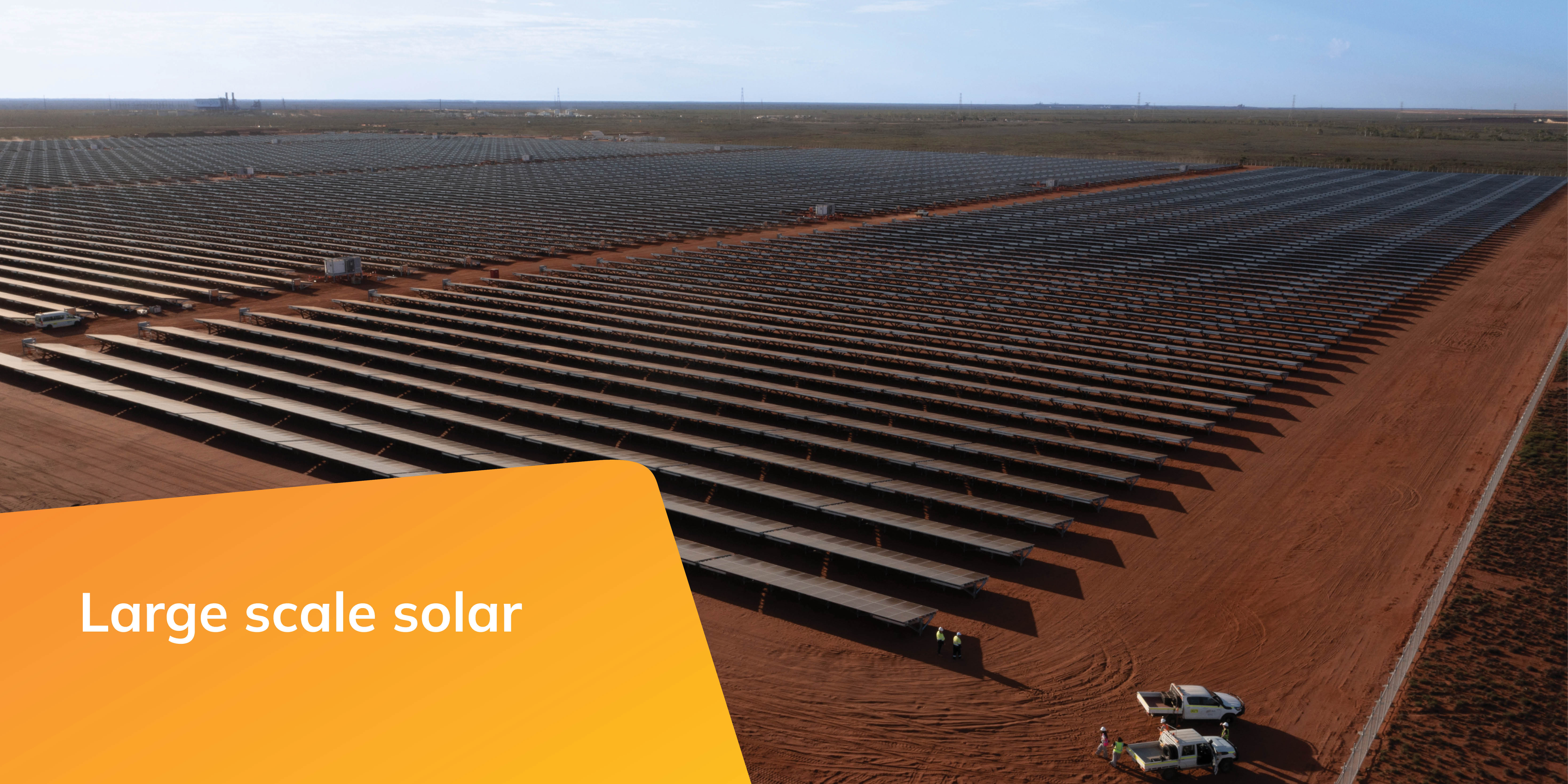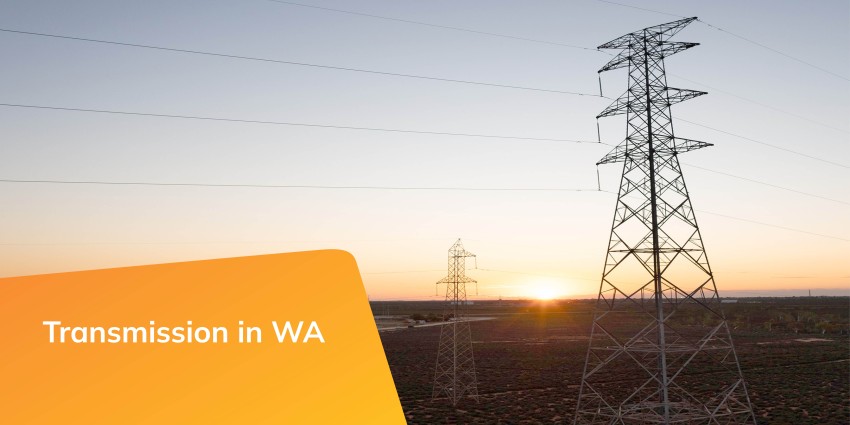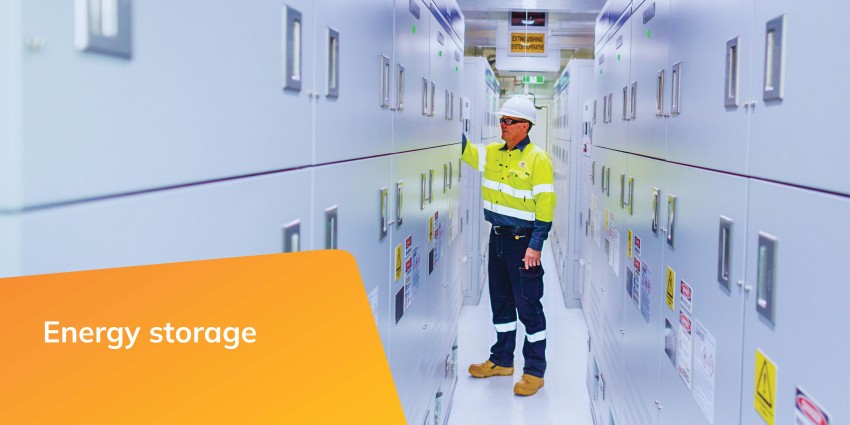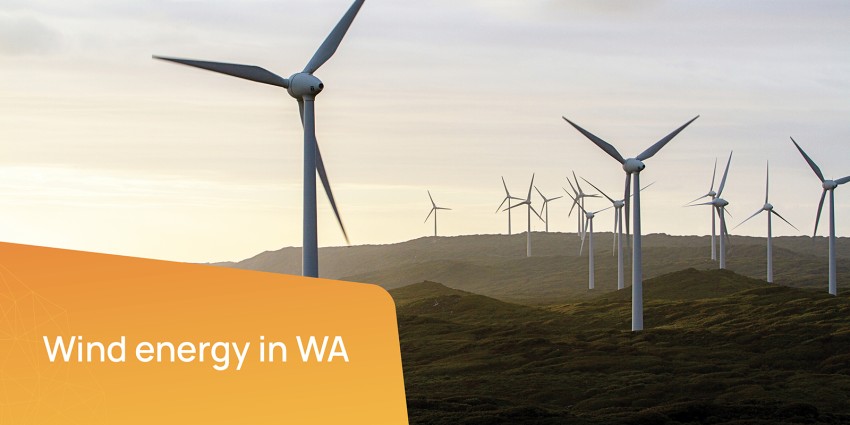Large-scale solar systems are designed to generate electricity on a significant scale, with vast arrays of solar panels spread over a large area. Combined, these can generate substantial amounts of electricity, often enough to power thousands of homes.
Solar farms, also known as solar parks or solar power stations in different parts of the world, can have thousands of solar panels installed on the ground. Many of these installations include tracking systems allowing solar panels to move and follow the sun to maximise the amount of solar energy generated throughout the day.
Solar farms can be built on land used for other purposes, such as farming, so that they coexist on the same land.
Learn more about combining agriculture and solar.
How large-scale solar systems generate electricity
A solar farm generates renewable energy in the same way that rooftop solar works for homes and businesses. Solar panels capture sunlight and turn it into direct current (DC) electricity. This DC electricity is sent to a solar inverter, which changes it into alternating current (AC) electricity, which is the type of electricity used in homes and businesses. Transmission lines then transport this electricity to where it is needed. Transmission networks can be considered a ‘super highway’ that carries electricity through towers and wires to homes, businesses, and communities in WA.
Using energy from the sun makes solar PV generation a low-emissions and cost-effective alternative, compared with other energy sources, such as traditional diesel, coal and gas-powered generation.
Of course, solar energy can only be generated during the day while the sun is shining, so other renewable energy sources such as wind, energy and battery storage are sometimes needed to support solar generation.
Case study: Merredin Solar Farm
Located approximately 260 km east of Perth in the Central Wheatbelt region, the Merredin Solar Farm is WA's largest solar farm under construction. Comprising around 360,000 solar panels, once complete the farm is expected to generate about 281GWh of electricity annually, supplying enough power for approximately 42,000 Western Australian households. By generating and delivering low-emissions, renewable energy into the SWIS, the Merredin Solar Farm will play a significant role in reducing Western Australia’s greenhouse gas emissions.
Case Study: Port Hedland Solar Project
Located over 1,500km north of Perth, the Port Hedland Solar Project is designed to meet 100% of BHP’s average daytime energy needs. Positioned near the Port Hedland Power Station, the farm is equipped with nearly 120,000 solar panels built to withstand winds up to 288 km/h, making it resilient in Australia’s most cyclone-prone region.
The Western Australian Government has invested $1.5 million from its Clean Energy Future Fund (CEFF) to support the Battery Energy Storage System (BESS) at the site. This BESS replaces the gas-fired power station's spinning reserve, using stored energy to provide instant backup to the grid when needed, reducing reliance on gas.









